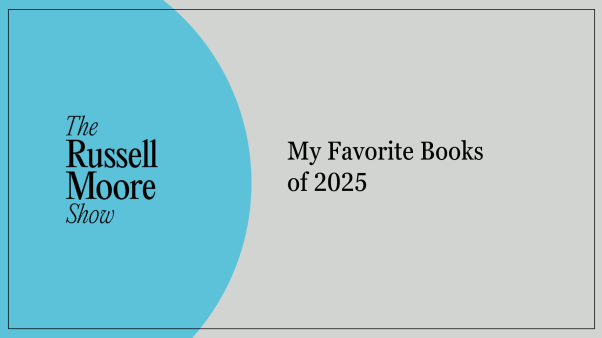Nowadays, as each new presidential election approaches, commentators are in the habit of forecasting the most pivotal contest of our lifetime, if not all of American history. But despite such overheated claims, some elections may actually mark unusually important turning points. In retrospect, 2016 seems a likely candidate, and there is no shortage of analyses or theories to help us make sense of it.
In Alienated America: Why Some Places Thrive and Others Collapse, Washington Examiner writer Timothy Carney uses the 2016 election as an opportunity to consider the overall health of our body politic and the “American Dream.” Like the best guides, Carney goes beyond shedding light on “horse race” factors like polling data, campaign strategies, and county-by-county deep dives. James Madison may have exaggerated a bit in Federalist 51 when he asked, rhetorically, whether government was the greatest of all reflections on human nature, but the intensity of our political moment does open a revealing window into more than election returns.
Why are some communities doing so well? Why are others languishing? Why are some places characterized by healthy signs of civic life and human flourishing, like strong marriages, vibrant schools, job growth, and safe neighborhoods with book clubs and bowling leagues? Why are others afflicted with rising rates of suicide, opioid addiction, separated families, and economic stagnation? And why were people living in the latter places most likely to provide Donald Trump with his strongest support in the primaries, even before the motivation of voting against Hillary Clinton could factor in? Alienated America tackles these questions.
A Sense of Despair
Carney’s work falls in the same neighborhood as Robert Putnam’s Bowling Alone and Our Kids, as well as recent titles from conservative thinkers like Charles Murray (Coming Apart) and Yuval Levin (Our Fractured Republic). While conservative-leaning himself, Carney does not harken back to an American golden age. Nor does he exclusively criticize the usual liberal suspects but instead takes aim at both right and left. (He even defends a role for labor unions!)
The book is eminently readable, weaving together personal anecdotes from Carney’s travels throughout the country with accessible but not dumbed-down synopses and applications of sophisticated social science data. Measured against the heated nature of our political moment and the controversy surrounding many of the topics he tackles, Carney comes across as a refreshing voice and friendly guide, his tone irenic and his approach straightforward.
One virtue of Carney’s approach is that he resists easy, totalizing explanations. What led so many voters to favor Donald Trump in areas that had previously gone Democratic? Why are some places doing poorly and others doing well? It is too easy to attribute these outcomes purely to economic factors. It is also too easy, not to mention uncharitable, to identify racism as the overriding factor or to dismiss “those people” for essentially deserving their lot in life.
Without denying the role of economics and race in today’s divided America, Carney argues that the fundamental culprit in many towns is a sense of despair, a feeling that the community lacks meaningful opportunity, human connection, and ultimately hope. This despair has many causes, and Carney explores how big business, the changing nature of manufacturing, the breakdown of marriage and family, growing secularism, overcentralization, and the rise of what he calls hyper-individualism all have fueled the alienation that led many to put their hope in a rough-and-tumble strongman who vowed to solve their problems.
Readers will find some aspects of Carney’s work more persuasive than others. A handful of observations struck me as particularly noteworthy. The first is the surprising connection between the ill effects of overcentralization and hyper-individualism. Carney paints a telling picture of how the reach of government into more and more areas of life crowds out the efforts of small and mid-size charities and churches. This overreach can create what Abraham Kuyper called an octopus-like entanglement of state tentacles poking into properly non-governmental spheres.
But Carney presses beyond the conventional “big government” critique, noting as well how big business and retail giants like Walmart leave their own centralizing footprint, crowding out smaller competitors with deeper roots in the community. For all the blessings of a wider supply of goods available at lower prices, there are civic costs that are no less real for being harder to quantify.
An increase in top-down centralization has gone hand in hand with rising individualism, whether measured by the sexual revolution and the breakdown of the family, the growth of secularism and the shuttering of churches, or economic and technological changes that make it easier to avoid interacting with real people, let alone neighbors. We have garages rather than front porches, we use Uber rather than calling a friend for a ride, and we summon strangers to take care of our pets via apps rather than asking a neighbor. Taken alone, none of these developments is necessarily damning. But the cumulative effect of government overreach and metastasized individualism has, in many places, hollowed out the “middle institutions”—churches, charities, clubs, volunteer organizations—that offer the fellowship and support needed for human flourishing. It is not good for men and women to be alone—Carney knows his Scripture (and his Aristotle). These middle institutions furnish something we can’t get from a federal program or through our own efforts: a sense of belonging, of mattering to others.
A second aspect of the book worth highlighting is the lessons Carney draws from communities that flourish, including wealthy enclaves like Chevy Chase, Maryland, and close-knit, highly religious areas like Oostburg in Wisconsin, Western Michigan, and Utah. Chevy Chase and elite neighborhoods like it are the furthest thing from Trump territory, yet they have much in common with Dutch Reformed outposts like Oostburg and Utah’s Mormon strongholds: a flourishing network of middle institutions, remarkably high marriage rates, economic opportunity, and strong bonds of civic identity. Regarding the family-and-marriage habits of the secular elite, Carney reminds his fellow conservative Christians that “those liberal elites practice what we preach.”
But even if elites may practice (if not preach) a certain “success sequence”—graduating from high school, then securing a full-time job, then getting married, then having children—there’s no guarantee that their example will filter downward. Moreover, American elites often take measures to ensure that their slices of the American dream remain off-limits to the less fortunate. That’s the problem with elites: By definition, there can only be so many, and so it will hardly suffice to tell people living in dying towns that the path to salvation lies in joining their “betters.”
There are, however, alternatives. The Dutch Reformed living in Oostburg, Orange City in Iowa, and Western Michigan aren’t elites by most secular measures. Nor are the Mormons in Salt Lake City or the Muslims Carney visited in Toledo, Ohio. But Carney, drawing from Alexis de Tocqueville’s Democracy in America, discusses the crucial role of religious communities in combating alienation. One does not simply move into Chevy Chase, Maryland, or Princeton, New Jersey—not without a sizable income, at least. But one can walk into church (or synagogue or mosque) almost anywhere in the country for free. This oversimplifies, of course, and the book goes into more detail, but two of Carney’s most interesting arguments are, first, the political claim that secularization gave us Trump, and second, the deeper sociological (and spiritual) claim that churches and other bodies of worship are a crucial component of thriving societies that have, thus far, fended off the debilitating malaise that afflicts so many people in so many places.
Human Embroidery
In the closing chapter of Alienated America, Carney considers solutions to the problems he’s spent the previous chapters describing. Here one hopes for a detailed 10-step plan or an innovative platform to be implemented by the party of one’s choice.
But what if the problem of alienation cannot be solved by imposing a large-scale plan ratified by politicians and implemented by policy experts? Carney does mention various ideas that can help here and there, such as ending the mortgage-interest tax break to encourage real neighborhoods and scaling back government regulation to give more room for voluntary organizations. Yet he doubts whether top-down solutions can deliver us from our predicament—or whether the challenges we face are truly national in the first place.
Throughout the book, Carney references and comments on the prayer of Jeremiah to “seek the peace and prosperity of the city to which I have carried you into exile. Pray to the Lord for it, because if it prospers, you too will prosper” (29:7). For most of his readers, Carney’s message is simple: to connect with people through local organizations and groups, whether that means going to church, sponsoring a youth sports team, or working for sidewalks suitable for biking. In other words, embrace the sort of small-scale human embroidery that cultivates close-knit community and fosters meaning, purpose, and fellowship. Christians can affirm this call without treating Carney’s modest ideas as the whole of the story, on a spiritual or even political level (a claim the author wisely avoids).
In Alienated America, Carney proves himself an invaluable guide, not only for looking back at a historically divisive election but also in looking forward with eyes to see how Christians and other people of goodwill can seek the prosperity of our neighborhoods, towns, and cities.
Micah Watson teaches political science at Calvin University. He is the co-author of C.S. Lewis on Politics and the Natural Law (Cambridge University Press).











